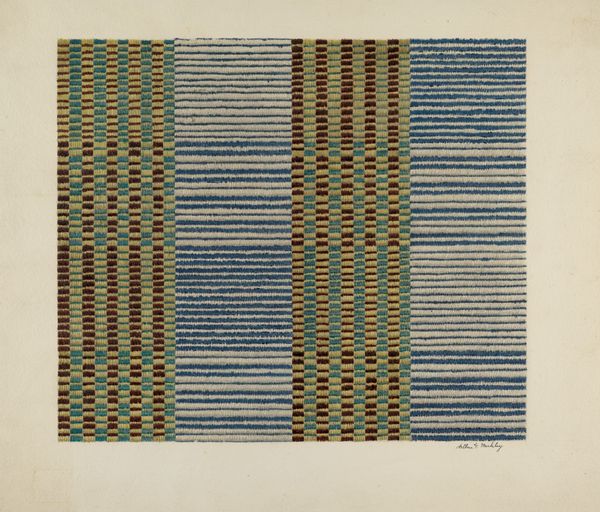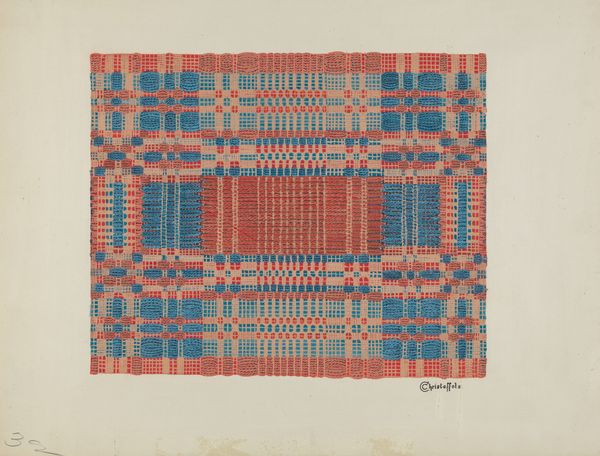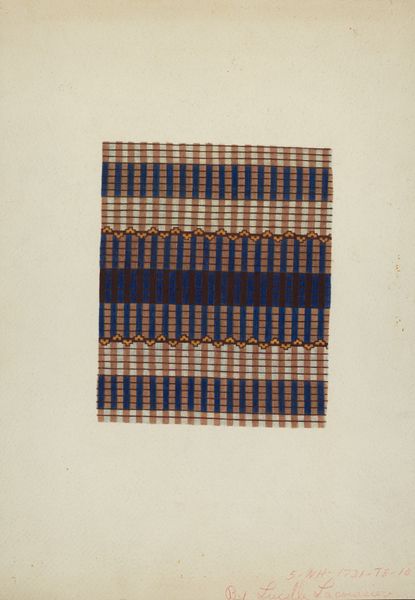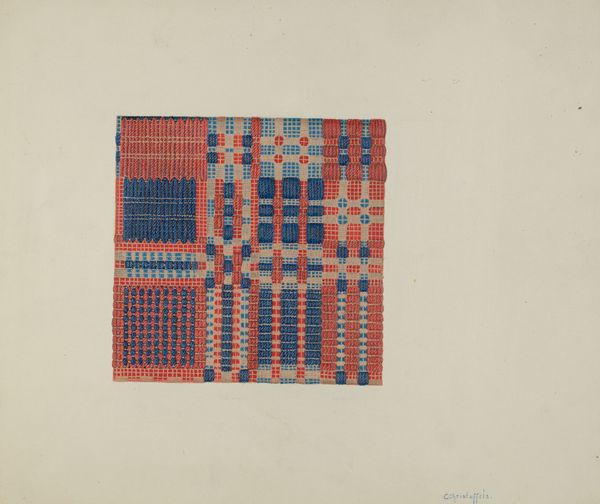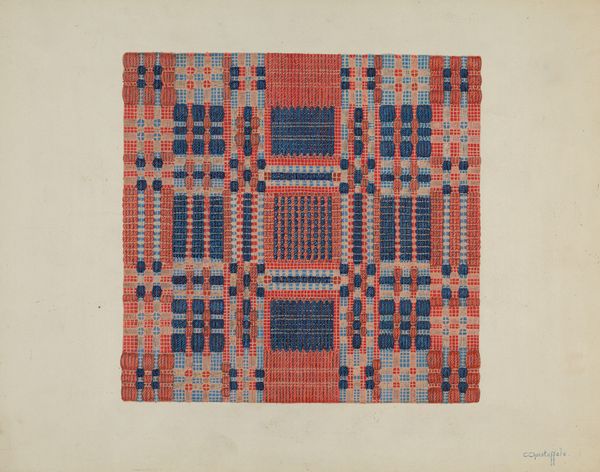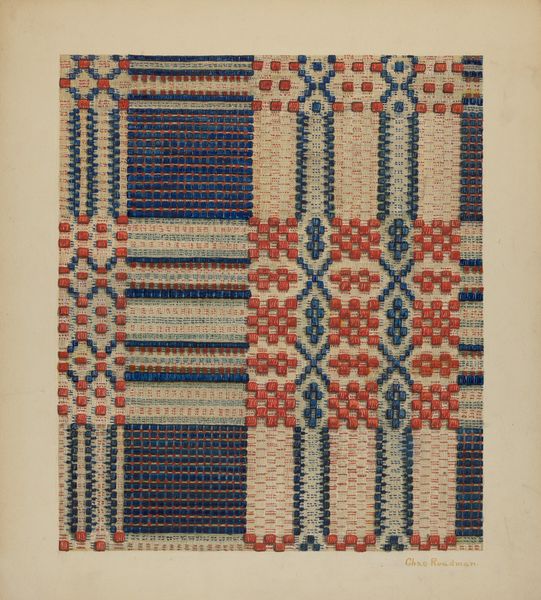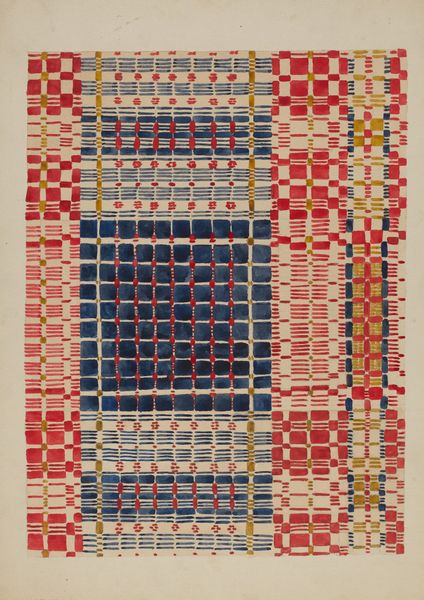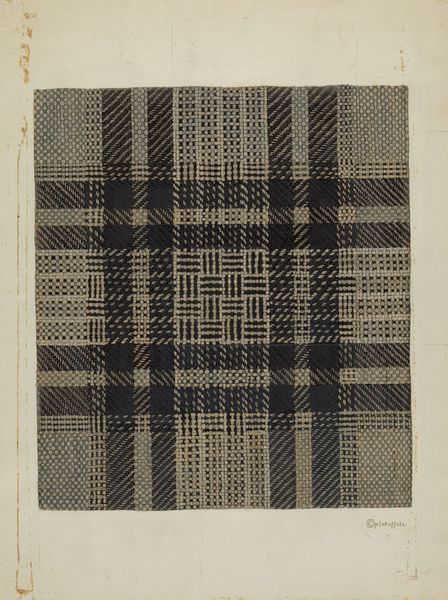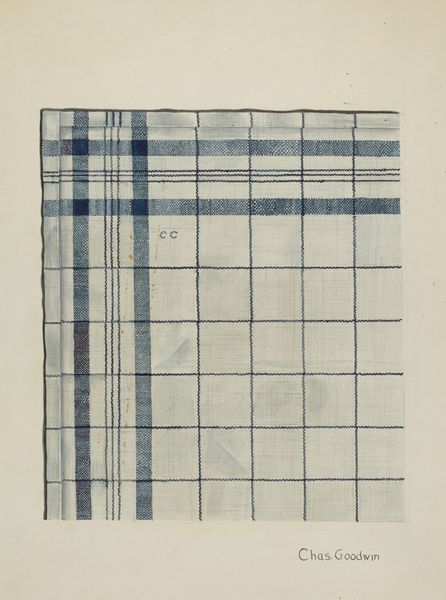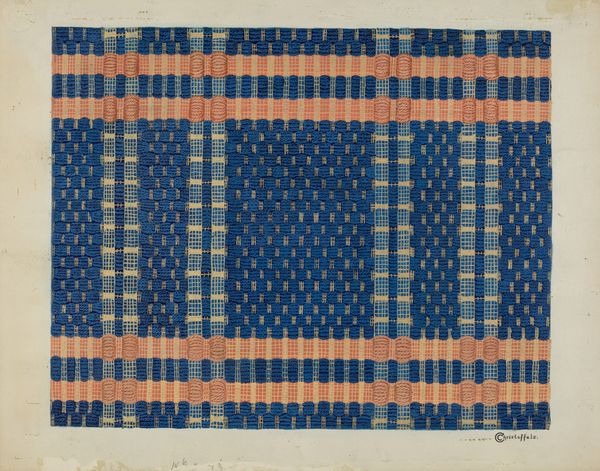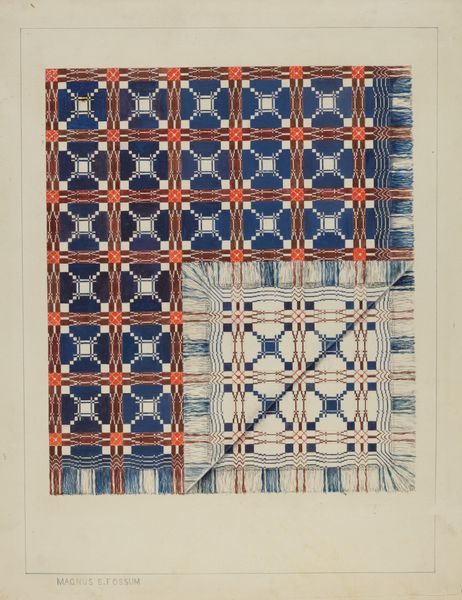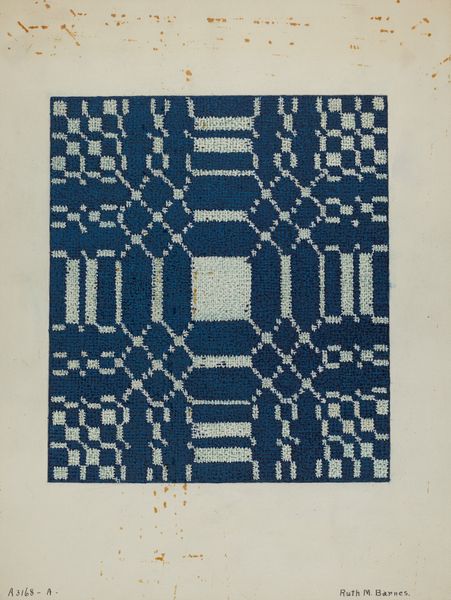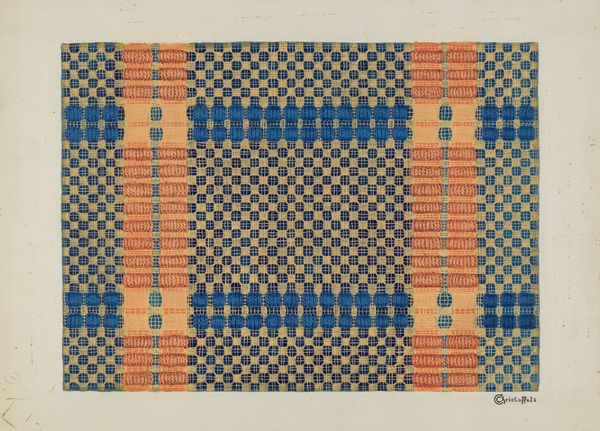
drawing, textile
#
drawing
#
natural stone pattern
#
repetition of white
#
textile
#
geometric pattern
#
minimal pattern
#
geometric
#
simple pattern
#
repetition of pattern
#
vertical pattern
#
pattern repetition
#
imprinted textile
#
layered pattern
Dimensions: overall: 35.2 x 27.8 cm (13 7/8 x 10 15/16 in.) Original IAD Object: 74" square
Copyright: National Gallery of Art: CC0 1.0
Curator: Here we have "Handwoven Coverlet," dating from around 1938, made of textile by Magnus S. Fossum. What strikes you about this piece? Editor: Initially, I’m drawn to the overall sense of quietness. The geometric pattern—the blues and browns—creates a muted harmony, a certain visual comfort. Curator: That sense of "visual comfort" makes me think about the role textiles played, and continue to play, in shaping our domestic spaces. These coverlets were, after all, utilitarian objects before they became aesthetic commodities. The labor involved, the history woven into each thread, all contribute to the coverlet’s significance. Editor: Absolutely. The handwoven nature is key. Each imperfection speaks to the human touch, the care, and perhaps even the socio-economic conditions of the weaver. The question is how was it made, who made it and were they compensated fairly? Curator: Those are crucial points. In the 1930s, textiles like this were part of a broader narrative around craft and national identity. Government initiatives often promoted local crafts, positioning them as inherently virtuous and connected to regional traditions. The intent was good but were minorities exploited by their labor in this industry? Editor: I appreciate that contextualization. The romanticization of "folk art" often obscures the power dynamics at play. The pattern's simplicity—the repetition of geometric forms in blue, brown, and white—might seem straightforward. But what did those colours and patterns mean within that cultural moment? The absence of that answer, opens the door for conversation, questions and a challenge to colonial modes of history telling that have historically oppressed minority groups.. Curator: And it encourages us to delve into the intent, perhaps Fossum was thinking about standardization, practicality and domestic tranquility in a period marked by global economic crisis. These sorts of design features in art become tools for historians. Editor: Exactly! We are free to look into many contextual directions when a piece makes an opening like that, giving modern voices a stage. For me this emphasizes the capacity art gives to revisit culture from the eyes of people in minority groups and use their own narratives, that colonialism previously repressed. Curator: Thinking about that, the coverlet presents more questions than answers. Thanks for that reflection. Editor: The pleasure was all mine, highlighting silenced voices with every thread of historical artwork gives an Activist a reason to keep looking back and working hard in the present.
Comments
No comments
Be the first to comment and join the conversation on the ultimate creative platform.
